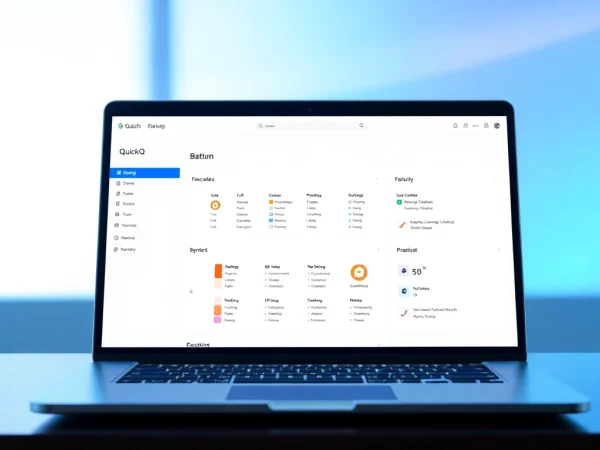Why You Need an AI Checker: Benefits and Key Features
Understanding the AI Checker
What is an AI Checker?
An AI checker is a sophisticated tool designed to identify text that has been generated by artificial intelligence (AI) technologies. As the prevalence of AI in content creation grows, so too does the necessity for tools that can discern the origin of written material. AI checkers analyze the nuances of language, sentence structure, and patterns unique to AI-generated text, thereby enabling users to validate the authenticity of the material they are reviewing. This is particularly valuable in contexts where originality and human authorship are crucial, such as academia, journalism, and content marketing.
How AI Checkers Work
AI checkers employ advanced algorithms and machine learning techniques to scrutinize the characteristics of text. These tools utilize a combination of natural language processing (NLP) and statistical analysis to assess writing for patterns indicative of AI authorship. Most AI checkers process text through a multi-layered evaluation framework:
- Text Analysis: The tool scans the input text for unique markers often associated with AI writing. This includes examining syntax, vocabulary usage, and overall coherence.
- Comparison with Databases: Many AI checkers are linked to extensive databases of known AI-generated texts, allowing them to draw parallels between the analyzed text and existing content.
- Score Generation: Once analysis is complete, the AI checker generates a score indicating the likelihood that the content was created by AI, usually accompanied by a breakdown of specific elements that led to the conclusion.
Common Use Cases for AI Checkers
AI checkers can be employed across various sectors, providing critical support to multiple stakeholders:
- Education: Institutions utilize AI checkers to prevent academic dishonesty and ensure that student submissions are original, fostering a culture of integrity.
- Publishing: Editors and publishers are increasingly adopting AI checkers to assess submissions, helping to filter out AI-generated content that may not meet their standards for authenticity.
- Content Creation: Marketers and content creators use AI checkers to validate the originality of their work, ensuring it resonates with audiences and complies with ethical standards.
- Research: Researchers leverage AI checkers to verify the authenticity of sources and ensure their literature reviews are comprehensive and grounded in original material.
Benefits of Using an AI Checker
Enhancing Content Authenticity
In an era defined by the rapid proliferation of AI-generated content, the value of authenticity looms large. AI checkers serve as a bulwark against the dilution of credibility by ensuring that writers can demonstrate the originality of their work. By incorporating an ai checker into the content creation process, authors can bolster their reliability and foster trust with their audience.
Reducing Plagiarism Risks
One of the primary advantages of employing an AI checker lies in its ability to significantly mitigate the risks associated with plagiarism. With AI technologies on the rise, unintentional similarities between human-generated and AI-generated text can lead to serious academic and legal repercussions. AI checkers act as preventive measures, helping users identify and address potential plagiarism before submission.
Boosting Writing Efficiency
Using an AI checker can also improve the overall efficiency of the writing process. By quickly assessing text for AI-generated patterns, writers can focus on enhancing their work rather than spending excessive time on revisions. With immediate feedback, users can refine their writing style and deepen their understanding of effective communication, ultimately producing higher-quality content in a shorter amount of time.
Choosing the Right AI Checker
Features to Consider
When selecting an AI checker, it’s essential to evaluate the features that can enhance user experience and effectiveness. Here are key factors to consider:
- Accuracy: The precision of the AI checker is paramount. Look for tools that provide detailed analytics and breakdowns of how conclusions are reached.
- User Interface: A user-friendly interface can make the process smoother and more intuitive, allowing users of all skill levels to navigate the tool with ease.
- Support for Multiple Formats: Ensure that the AI checker can accept a variety of text formats, including documents, PDFs, and web pages, to maximize its utility.
- Data Privacy: Understand the privacy policies associated with the AI checker to ensure that your content is protected and remains confidential.
Cost versus Value Analysis
When weighing the investment in an AI checker, it’s crucial to analyze the cost versus the value it provides. While there may be free tools available, their features may be limited compared to premium offerings. Evaluate what aspects are most beneficial to your work, whether that be superior accuracy, advanced analytics, or robust customer support.
User Feedback and Recommendations
Before finalizing your choice, seeking user feedback can provide insights into the effectiveness and usability of different AI checkers. Explore forums, reviews, and testimonials to gauge the user experience, paying close attention to both positive and negative comments. Recommendations from peers in your industry can also help steer you toward the best option based on firsthand usage.
Implementing an AI Checker in Your Workflow
Integration with Existing Tools
To maximize the utility of an AI checker, consider how it can seamlessly integrate into your current workflow. Many advanced AI checkers offer integrations with popular writing tools, editors, and content management systems, simplifying the process of checking authenticity as you create content. Establishing a streamlined workflow not only saves time but also ensures that content is consistently evaluated for originality.
Best Practices for Usage
To fully leverage the capabilities of an AI checker, adhere to best practices, including:
- Regular Checks: Make it a habit to use the AI checker throughout the writing process, rather than only at the end. This encourages ongoing reflection on originality.
- Understand the Results: Take the time to analyze the feedback provided by the AI checker. Understanding the reasons behind its evaluations can improve your writing techniques.
- Be Proactive: Before submitting any piece of work, always run it through the AI checker as a final precaution to catch any issues that may compromise authenticity.
Tracking Performance Metrics
Monitoring the effectiveness of your AI checker is essential to ensuring it meets your content authenticity needs. Keep track of metrics such as:
- Detection Accuracy: Evaluate how often the checker correctly identifies AI-generated text versus human writing.
- User Satisfaction: Collect feedback on how the tool aligns with your writing and verification goals.
- Time Efficiency: Measure the amount of time saved in the writing process due to quicker validations.
Future of AI Checkers
Emerging Trends in AI Detection
The landscape of AI detection is evolving rapidly, with a number of emerging trends that are likely to shape the future of AI checkers. One significant trend is the adaptation of AI checkers to detect more sophisticated AI models, as the technology behind AI writing continues to advance. Ongoing research in natural language processing will enhance the capability of AI checkers, allowing them to remain ahead of the curve.
Technological Advancements
Technological advancements will play a pivotal role in enhancing AI checkers’ accuracy and efficiency. Advances in machine learning algorithms will enable AI checkers to create more refined distinctions between human and AI-generated text. Additionally, the integration of AI technologies into the checkers themselves may enable them to learn and improve over time, yielding better results with each analysis.
Impact on Content Creation
The proliferation of AI checkers will also bear significant implications for the broader landscape of content creation. As reliance on AI technologies increases, the demand for trustworthy, authentic content will rise commensurately. Writers, educators, and content creators will need to adapt by employing AI checkers as standard tools in their processes, reinforcing the importance of maintaining integrity in writing. The future holds a dual responsibility: harnessing the convenience of AI while also ensuring that human creativity and authenticity remain prioritized.










